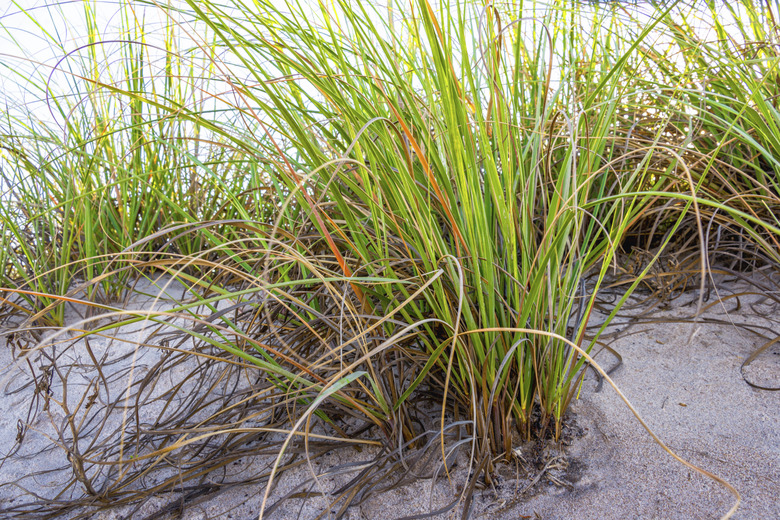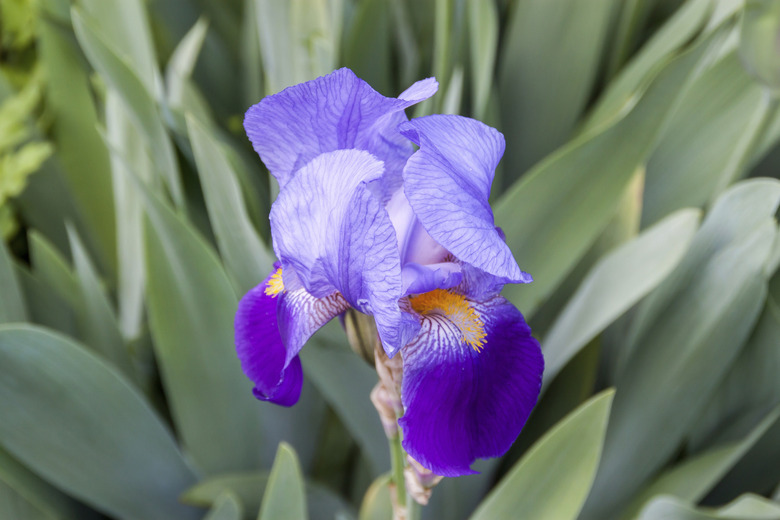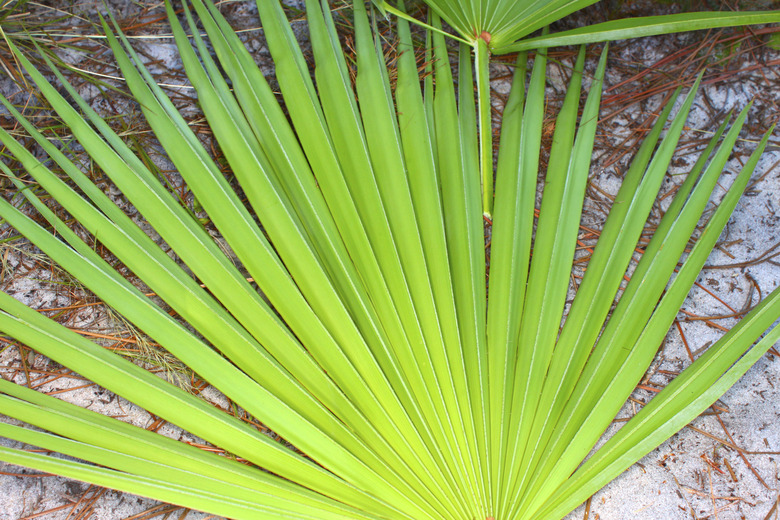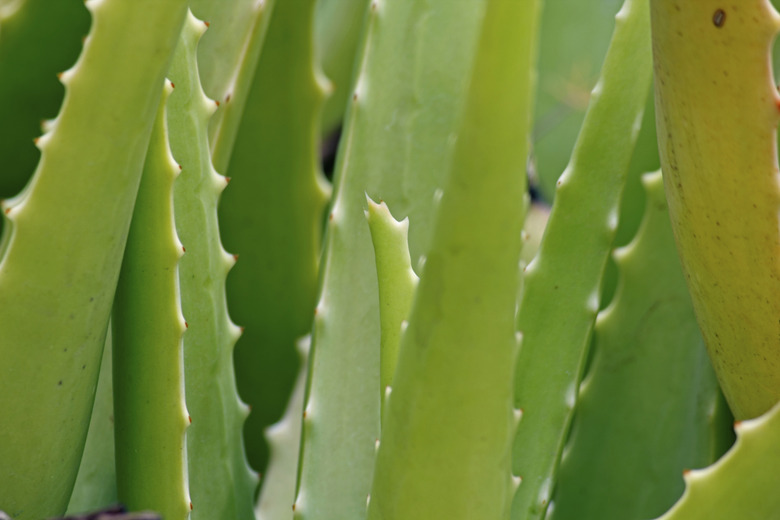Plants That Have Sharp Blades
If you're a gardener, you have hundreds of plants from which to choose when planning your outdoor garden or picking a new houseplant. You may have already encountered some plants that are attractive but have sharp-edged, narrow leaves that can injure your hands when you touch them. Although it helps to wear gloves while you work with these plants, identifying them in advance is also a good idea to help prevent problems.
Grasses
Ornamental grasses have many uses in the garden. They make interesting accents in mixed beds and taller types work well as screens to block an unwanted view. All grasses have thin leaves, or blades, but some kinds have blades with especially sharp edges. For example, pampas grass (Cortaderia selloana) is a South American plant that develops clumps of thin, grassy leaves with sharp edges. This plant reaches a height of 8 to 12 feet and spreads to about 6 feet; it grows as a perennial in U.S. Department of Agriculture plant hardiness zones 8 through 10. The sea oat plant (Uniola paniculata) is another ornamental grass with narrow, sharp blades; its are 2 feet long. The plant forms nodding seed heads in summer and is hardy in USDA zones 6 through 10.
- If you're a gardener, you have hundreds of plants from which to choose when planning your outdoor garden or picking a new houseplant.
- The sea oat plant (Uniola paniculata) is another ornamental grass with narrow, sharp blades; its are 2 feet long.
Flowering Perennials
Some flowering perennials have narrow leaves that are sharp at their edges. These perennials include the bearded, or German, iris (Iris germanica), a plant that's notable for its colorful flowers that appear in late spring. Its leaves are sword-shaped, sharp-edged and erect; they surround tall flower stalks. The plant is about 3 feet tall and is hardy in USDA zones 3 through 10. The artemisia variety "Valerie Finnis" (Artemisia ludoviciana "Valerie Finnis") is another example of such flowering perennials. A bushy plant with sharp, silver-blue leaves, it's about 18 inches tall, produces clusters of cream-colored flowers in summer and is hardy in USDA zones 2 through 9.
Extra-Sharp Types
Some plants have narrow leaves that are extra sharp because their edges are irregular, or toothy. An example is the saw palmetto (Serenoa repens), a fanlike palm that grows 2 to 8 feet tall. Its leaves consist of many radially arranged blades, and each blade has sharp, toothy edges. The compound leaves are attached to stems that have the saw-toothed edges for which the plant was named. Saw palmetto is hardy in USDA zones 8 through 10. The urn plant (Aechmea fasciata), a type of bromeliad, also has toothy-edged blades, and sometimes they develop spines that make them extra sharp. The blades form a rosette around the plant's center, where a flower emerges. The urn plant gets about 3 feet tall. It is hardy in USDA zones 10 through 11 and is used as a houseplant in all zones.
- Some flowering perennials have narrow leaves that are sharp at their edges.
- These perennials include the bearded, or German, iris (Iris germanica), a plant that's notable for its colorful flowers that appear in late spring.
Succulents
Succulent plants often have thick leaves that store water. A few of these plants also have narrow, sharp leaves, and sometimes they include thorns. For example, the aloe plant (Aloe vera) has long, tapering and pointed green leaves with sharp edges that are armed with pointed thorns along their margins. This plant gets about 2 feet tall, grows outdoors as a perennial in USDA zones 10 through 12 and does well as a houseplant in all zones. The agave or century plant (Agave americana) is another sharp-leaved succulent. Besides sharp edges, its long, tapering leaves have a pointed spine at their tips. The agave grows as a rosette 3 to 6 feet tall and up to 10 feet wide, and it is hardy in USDA zones 8 through 10.
- Succulent plants often have thick leaves that store water.
- A few of these plants also have narrow, sharp leaves, and sometimes they include thorns.
References
- Missouri Botanical Garden: Cortaderia Selloana
- Floridata: Uniola Paniculata
- Missouri Botanical Garden: Iris Germanica
- Perennials.com: Artemisia Ludoviciana "Valerie Finnis"
- Floridata: Serenoa Repens
- Missouri Botanical Garden: Aechmea Fasciata
- Missouri Botanical Garden: Aloe Vera
- Missouri Botanical Garden: Agave Americana




